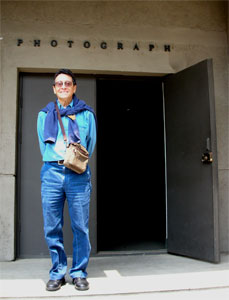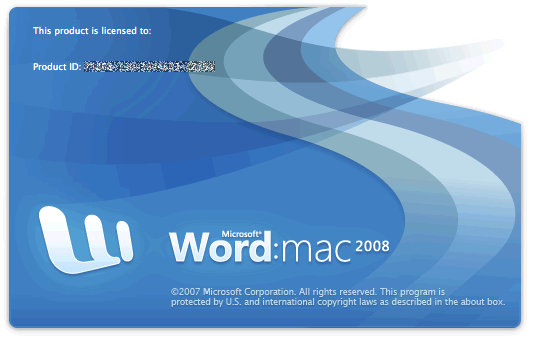 |
|
My first foray to Beijing — in fact, my first trip in the PRC beyond the south of China — took place in mid-May. Anna and I headed from Shenzhen to the nation's capital to supervise the installation there of a 50-print mini-version of "Saga: The Journey of Arno Rafael Minkkinen" at the new See+ Art Space/Gallery, located in Bejing's 798 Art District. The show, chosen by the gallery's directors as their premiere offering, opened on May 17.
|
|
As with Saga's previous installation in China, at the 2006 Lianzhou International Photo Festival (see issue 30), the See+ venue did not import Minkkinen's gelatin-silver prints. Instead, they produced (at their own expense) excellent digital prints of the images. Generated from files provided by Minkkinen, sized to match the photographer's editioned prints, then matted and framed, these handsome Epson prints on a matte-surfaced Epson art paper served as effective stand-ins for Arno's fine originals. |
| This is how photography from abroad most commonly gets shown in China. Uniquely suited to certain kinds of photographic work, this method bypasses all the logistical problems and expenses involved in shipping, insuring, and moving across borders fragile original works on paper whose content may not find ready understanding from customs officials. |
(Notably, I saw the process reversed during my 2006 tour of Australia, where I spent time in a university art gallery with a survey of contemporary Chinese photo-based work produced in Oz from digital files supplied by the artists and printed to their specifications by the gallery. I expect to see much more use made of this approach to transmitting imagery to audiences worldwide.)
The "soundtrack" that I created for the museum-scale version of Saga — 30-second excerpts from contemporary recordings of Finnish folk songs, which float into the aural environment of the exhibition space every 5 minutes — became part of this installation also. And a shortened version of my curatorial text from the full show's accompanying monograph (in both the original English and Chinese) appeared not, as usual, on the gallery walls, but backlit under glass in two long recesses on the cement floor. |
|
The opening was jam-packed. During the course thereof I presented a short talk on the subject of collecting photographs. For a slideshow on the installation of Saga in Beijing, and the opening of See+ Art Space/Gallery, click here.
|
|
In addition to mounting the show, See+ published a handsome poster, a set of 10 Saga postcards, and a well-designed catalogue, the last of which included that shortened version of my curatorial essay, again in Chinese and English. The catalogue reproduces the 50-print mini-version of Saga full-page, with thumbnails of the remaining images in the complete 120-print sequence. So a pocket-sized version of the book now exists in China. |
| Perhaps this will spark interest in a Chinese edition of the full monograph. |
In May 2007 the Beijing World Art Museum mounted "Imaginary Space: Jerry Uelsmann Retrospective." And in 2006 Ralph Gibson had a solo show at the Soka Art Centre in Beijing. So photography from the west has begun to appear in exhibition form in China. I have not yet determined whether photographers other than Minkkinen have had commercial-gallery exhibitions in Beijing, nor (if so) with what results. So this may constitute a first. In any case, they're not frequent; the development of the mainland Chinese audience for work from the west is still at an early stage, and the market in the PRC for contemporary photography from the west remains in the testing stage.
As of the date of this report (June 1, 2008), not yet halfway through the show's run there, the gallery had sold close to 30 prints, satisfying its principals and the photographer as well.
While in Beijing, we also wandered around the city a bit, paying special attention to the art spaces devoted to photography or presenting photographic work. Some of these, such as the Today Art Museum and the Three Shadows Photography Art Centre, were built from scratch. Others — like most of the spaces in the 798 art district, including the See+ Art Space/Gallery — occupy repurposed former industrial structures, often radically renovated.
The 798 district preserves numerous reminders of its past; from the street one can see a wide variety of of chutes, pipes, storage tanks, and other remnants of the former factories. In many cases the redesigned spaces retain such memorabilia; See+ incorporates fading, flaking Mao-era production slogans on its interior walls.
| We made a stop at the 798 Photo Gallery, to pick up a copy of a new book for which I provided an afterword: Yang Yankang's Buddhism in Tibet. Published by China Publishing Ltd., in conjunction with a show at the 798 Photo Gallery, this clothbound monograph contains 86 sumptuous reproductions of Yang's gelatin-silver prints. It represents the halfway mark in what Yang expects to resolve as a ten-year project. If you're hunting for a copy, here's the ISBN: 978-962-8785-47-6. |
|
 LAFA, May 19, 2008 LAFA, May 19, 2008
|
From Beijing we made a side trip to Shenyang, to visit the Luxun Academy of Fine Arts (LAFA), the oldest art school in China, celebrating its 70th anniversary this year. LAFA's photo program, now in its 22nd year, is the longest-running in China. The department's extensive library contained none of essay collections but several monographs by others — Jerry Uelsmann, Tony Ward — to which I contributed introductions.
I gave a talk to the students and faculty (on the making of "Saga"), met with photographer and program director Liu Lihong and other members of the department's faculty and administration, and accepted an invitation to return in the fall to participate in an event celebrating the school's 70th birthday. Discussions are underway regarding a regular teaching stint there. |
|
As previously noted (see issue 34), I left behind my beloved AppleWorks word-processing application when Steve Jobs declared it had reached EOL, and moved to MS Word for Mac, experimenting first with version X (from 2000) before upgrading to Office for Mac 2008 and its latest iteration of Word in early 2008.
|
|

|
|
I'm not your average tech writer, in the sense that I will only review products that I use regularly and consider central to my professional and/or creative activity. That's a fairly short list, meaning that it doesn't signify a major change of direction in my writing — just an experiment, and a busman's holiday of sorts. Further details about these software and hardware experiences will appear in reviews that I'll post at WordWork (another section of the Café), at Mac Edition Radio, and elsewhere.
Upcoming travel: In late June I will head to Madrid, Spain, to deliver an address at the symposium "Edward Steichen and his contemporaries," held at the Museo Nacional Centro de Arte Reina Sofía June 26-27. Organized by Catherine Coleman (no relation) in conjunction with the exhibition "Edward Steichen: Lives in Photography," which will wind up its tour at the Reina Sofía June 24-September 22, 2008.
Concurrently, the exhibition "Edward Steichen: In High Fashion" will open at the Museo de Traje, also in Madrid.
Both shows (each of which has an accompanying monograph) circulate under the auspices of the Foundation for the Exhibition of Photography. I contributed an essay reconsidering Steichen's total oeuvre and curatorial/organizational activities in photography to the monograph Edward Steichen: Lives in Photography, which has appeared in eleven different editions to date. My presentation at the Reina Sofía will draw heavily on that text.
Then back home for the rest of the summer and early fall. |
|
In this edition you'll find the text of "Steichen Then, Now, and Again: Legacies of an Icon," the aforementioned contribution to the FEP monograph. (PDF format.) And also "This Is a Photograph: Process Experimentation at Century's End," the catalogue essay for this is [not] a photograph, a 2001 traveling exhib.0ition curated by Roger Sayre and sponsored by Pamela Auchincloss/Arts Management. (PDF format.)
The essays I post here remain on the Writings & Publications menu until I post a new issue and replace them, at which point they move permanently to the Photography Criticism CyberArchive, available thereafter to that repository's subscribers. A small selection of my texts will stay semi-permanently on the Writings & Publications menu here, along with links to other work of mine that appears elsewhere on the web.
For your convenience, we've set up an online store through which you can order my books, with a shopping cart, secure credit-card transactions, and other e-commerce frills.
This section of C: the Speed of Light contains brief synopses of recent, current, and upcoming projects and activities related to my work as a critic, historian, teacher, lecturer, and internet publisher.
back to top
|